
|
|
|
|
|
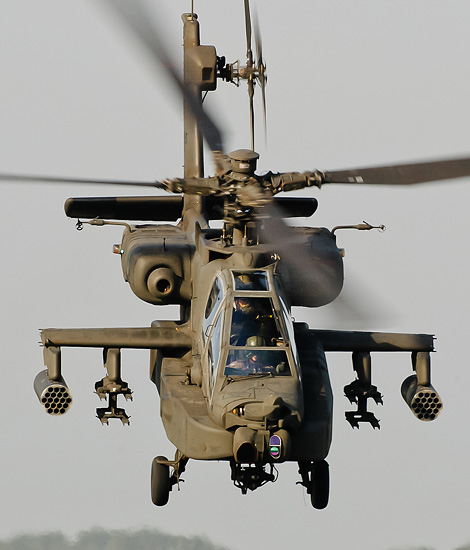
|
Tactical Training at the HWIC 2006; Gilze-Rijen, October 17, 2006
Helicopter Weapon Instructor Course; Text and Photograph's by Alex van Noye
The exercise HWIC Recovery took place at Gilze-Rijen Air Base from October 16, until October 19, 2006. This
extended exercise is an integrated exercise which is part of the Helicopter Weapon Instructor Coarse (HWIC).
I was present at Gilze-Rijen during this HWIC exercise on Tuesday October 17, 2006.
Helicopter crews of the Dutch THG-KLu are trained for integrated cooperation between ground and air units
during the Helicopter Weapon Instructor Course (HWIC). One of the exercises in this process is the exercise
HWIC Recovery. Ground units are in this scenario supported by helicopters and fighter aircraft during Close
Air Support (CAS) and Close Combat Attacks (CCA). Ground units will guide the aircraft and helicopters to
their targets. The best helicopter pilots and loadmasters of the Dutch air force are significantly tested
during this training. The training is not an ordinary training, because the number of students which are
admitted to the training program is very small. The weapon training instructors are especially trained in
tactical situations. The students will learn how to use the helicopter as efficient as possible during
tactical situations. The HWIC is an education which features multiple aspects in modern combat, such as;
tactical flight formations, attack tactics, air support to ground troops and support to Special Operations.
The Royal Netherlands Air Force made an inventory of several combat experiences from previous deployments
in Albania, Kosovo, Iraq, Afghanistan and Djibouti. New insights based on the operational experiences are
quickly applied. The purpose of this training is to retrieve the best tactical advantage of the helicopter
in every situation.
The Dutch HWIC is internationally highly regarded. Besides the Netherlands HWIC course, there are only a
British and an American equivalent of this training for helicopter weapon instructors. The Dutch version
of the HWIC started in 2005 as an annual course of 15 consecutive weeks, divided into various sub-exercises.
The level of the HWIC begins where the skills of a normal well-trained helicopter pilot are ending. The
students are all experienced pilots and they all gained operational experiences. With this training, they
continue the development of modern combat. It is important to have a critical eye for tactical situations
to improve the process.
|
|
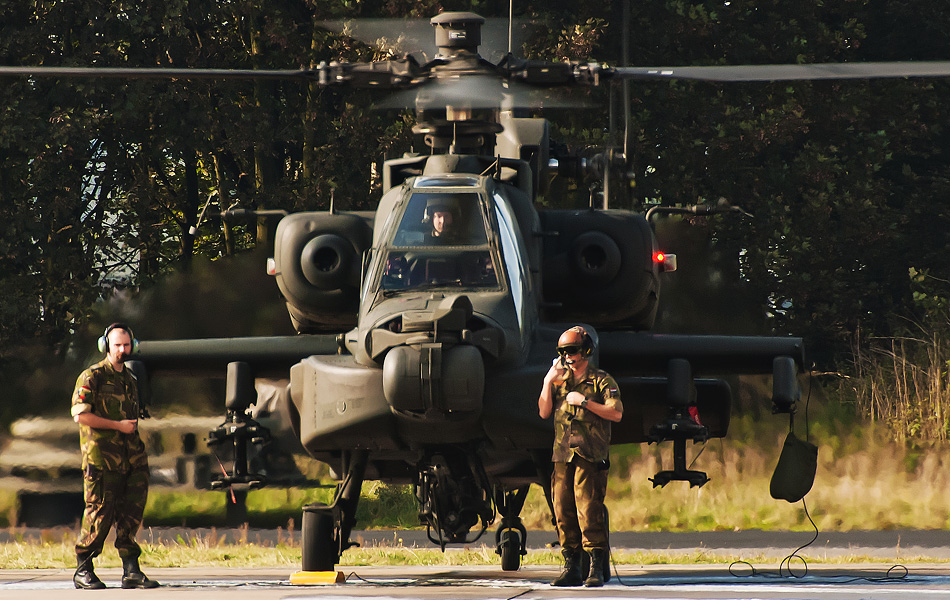
|
Also technically they should know everything about the helicopter. It is also important to know what the
helicopter cannot do in certain circumstances. The training is not just for pilots, loadmasters can also
participate in the training. The loadmaster is in charge when it comes to finding the most suitable landing
spot. He is also responsible for the way of loading and unloading cargo from the helicopter. Loadmasters
are in these situations just as important as the pilots. They support each other when it comes to flying
tactics and shooting skills. The students need to show they can perform as a group but also as individuals.
They have to show that they are capable to perform complex missions as a weapon instructor. Scenarios are
during the HWIC always based on realistic recent scenes. The students will fly many hours in this period,
but they are in addition also busy with the theory. It is clear that the HWIC demands an exceptional quality
of its participants. They have to handle several types of scenarios and find the best solutions during the
actions. The focus of the exercise is working as a team. The communication between helicopter crews and the
units on the ground are the key to success. This teamwork is elaborated during the exercise HWIC Recovery.
The participants will have the feeling that they are in a real war scenario. The pilots of the helicopters
are continuously locked by enemy radars during the flight. Again and again they have to avoid enemy gun fire.
Creative and thoughtful solutions are expected from the students to escape from these enemy attacks. It is
not easy to take the proper actions in a big helicopter formation. Students who succeed during the HWIC are
specialists in tactical action and are able to manage the various weapon systems, radar systems and flight
systems. They are also able to coordinate ground support with multiple helicopters and they can advice the
commander during the action. The knowledge which is gained by the HWIC participants is transferred to the
other less experienced pilots and loadmasters in their own units.
On October 17, 2006, I attended the flying part in the afternoon of the HWIC exercise at Gilze-Rijen. A
number of helicopters from the THG-KLu from Soesterberg Air Base were present at Gilze-Rijen for the
Recovery exercise. The helicopters were 2 Chinooks of the no 298 Squadron and 2 Cougars of the no 300
Squadron. We had to report ourselves at the main entrance of the base at noon. We were picked up by our
guides who took us to the first platform. The first platform which we visited was the Redskin platform.
The helicopters from Soesterberg were parked at this location. I did not make any photos of the Chinooks,
because they were parked between the ground materials. The 2 Cougars were very easy to catch on photo.
Both helicopters were completely free on the platform. It was no problem to capture the 2 Cougars on a
few decent photos. After a short visit to the Redskin platform, we were driven to the Hawkeye platform.
The Apaches of the no 301 Squadron were prepared on the Hawkeye platform. These helicopters were prepared
for their flights. We were even allowed to look inside the hangars of the no 301 Squadron. We were not
allowed to take photos inside the building. There was one Apache on the platform parked in the corner;
this helicopter was subjected to an engine test. The Apache stood in the shade under the trees. We
were brought to the south side of the runway after a short visit to the platform. We were able to shoot
the departing helicopters from this point. The first 2 Apaches appeared on the runway after a few minutes.
Both helicopters taxied to the runway; this resulted in a photo with both helicopters behind each other.
The helicopters started to hover just before entering the runway. The helicopters departed at a very low
altitude right in front of our lenses. Both helicopters left to the east for the exercise which took
place in Oirschot. Also a third Apache left via the Kilo taxi track. My short visit to Gilze-Rijen came
to an end after the departure of the last Apache. I went home with some fantastic photos on the card.
|
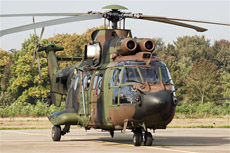
|
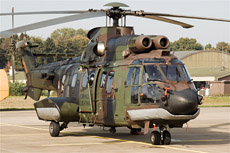
|
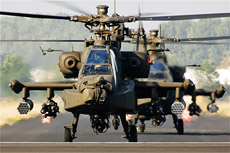
|
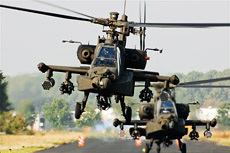
|

|
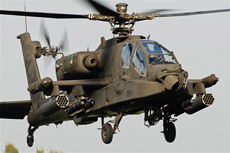
|
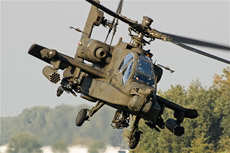
|
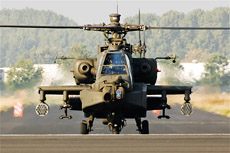
|
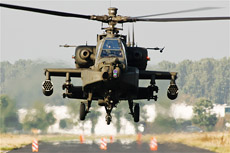
|
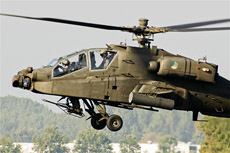
|
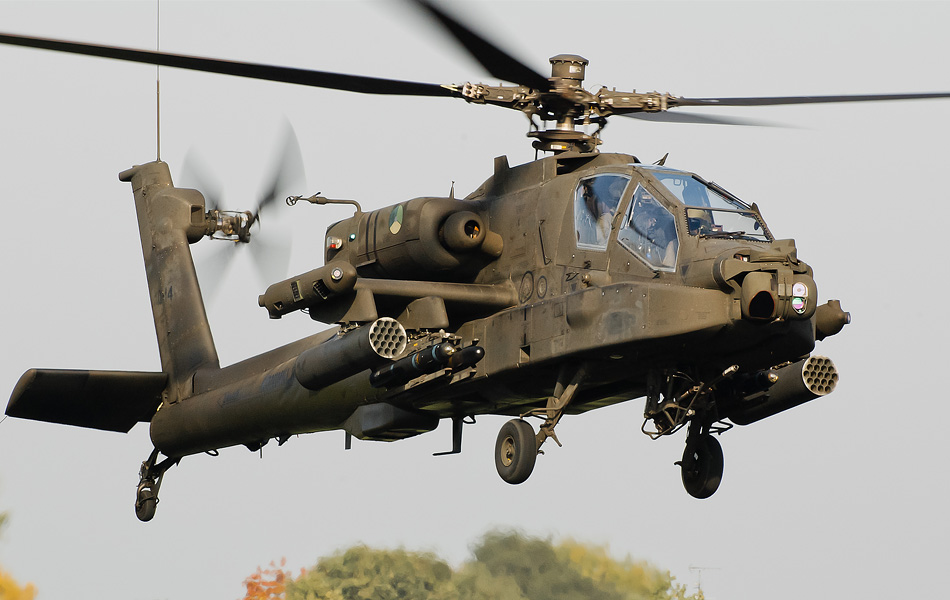
|
|
|

|







